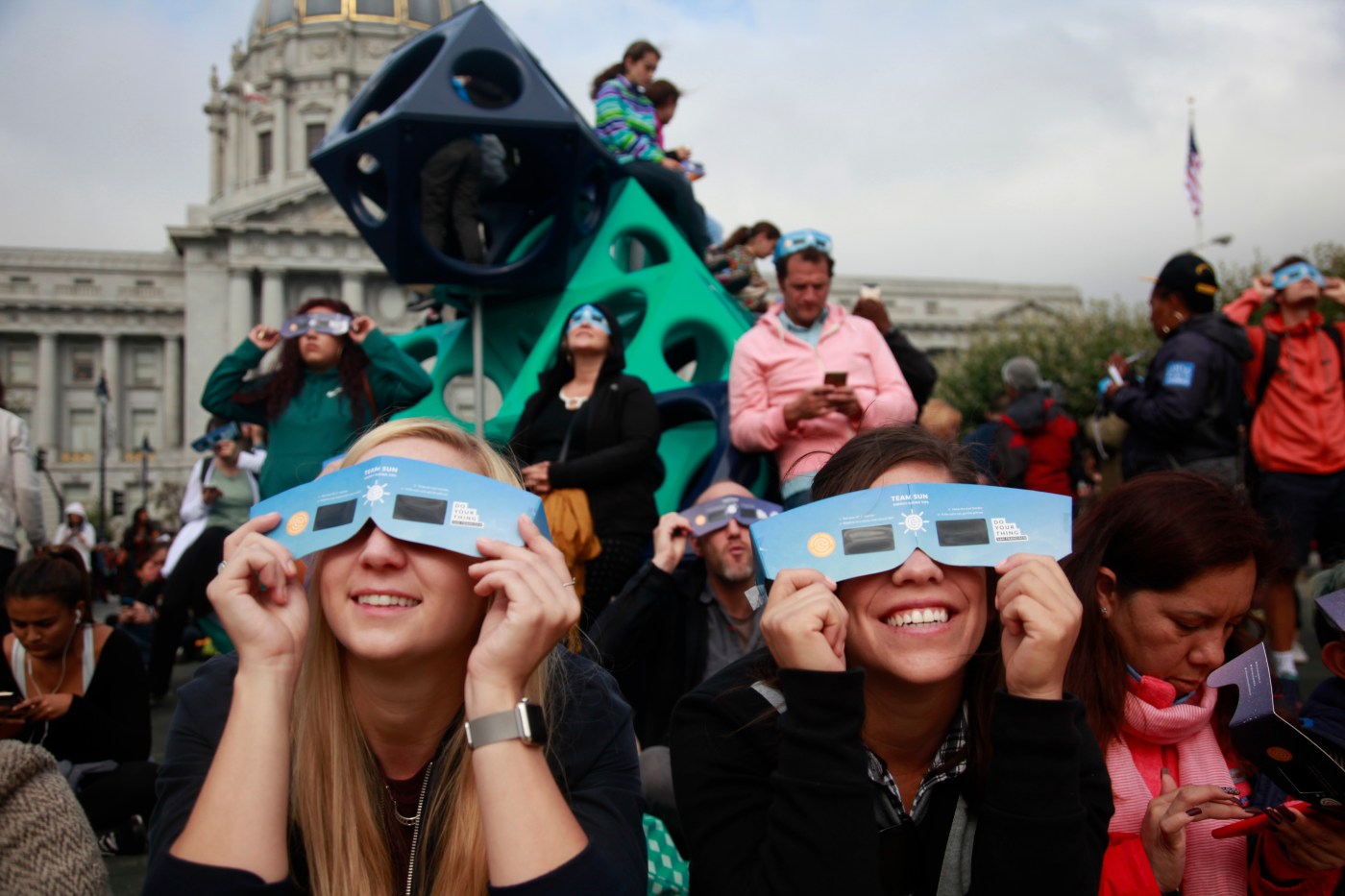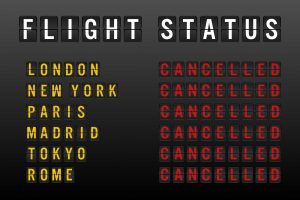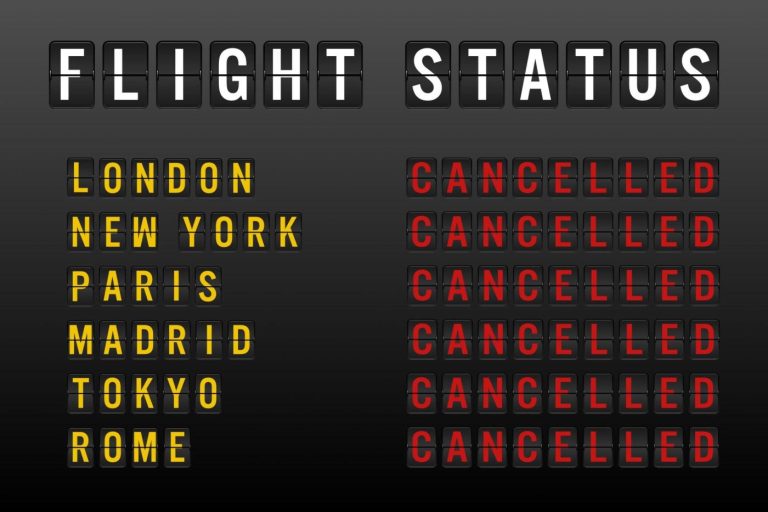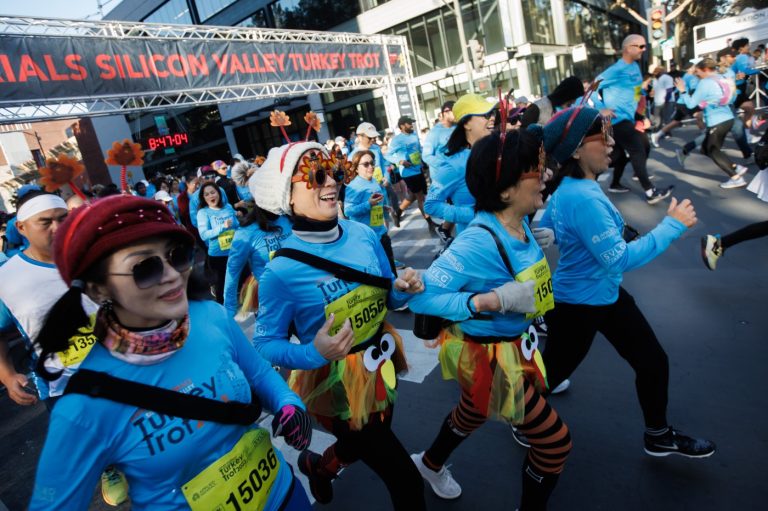Next Monday, an amazing event that hasn’t happened since 2017 will captivate the United States.
No, “2 Broke Girls” isn’t coming back for another TV season. Matt Cain isn’t rejoining the Giants. It’s an eclipse. A total solar eclipse. And it will be the last one in the contiguous United States until 2044.
The best places in the country to watch the rare cosmic show on April 8 — when the moon will pass between the sun and the Earth, completely blocking the sun for about 4 minutes — will be in a 115-mile wide strip stretching through 15 states from Texas to Maine. Alas, that doesn’t include California.
Roughly 32 million people, or about 10% of the U.S. population who live within that narrow band, will experience a full blackout of the sun, along with nearly 4 million “eclipse tourists” who are expected to travel from nearby states, and even other countries to that “path of totality,” as astronomers call the full route of the moon’s shadow as it moves across the Earth.
In most places in North America outside that narrow strip, including the Bay Area, people will see a partial eclipse, with only some of the sun covered. How much? It depends on where you are on the globe.
According to NASA, 20% of the sun’s area will be obscured if you are in Seattle; 22% in Portland; 34% in San Francisco and Oakland; 36% in San Jose; 48% in Los Angeles and 54% in San Diego.
Dallas, Little Rock, Indianapolis, Cleveland and Buffalo? 100%.
In the Bay Area, the eclipse will begin at 10:14 a.m., then peak at 11:13 a.m. and end at 12:16 p.m. As long as clouds aren’t in the way, the sun will look like a big yellow cookie with a gaping bite taken out of it.
During a total solar eclipse, day turns to night. The temperature drops. Birds often stop singing. For many who experience it, a total solar eclipse is nothing short of a breathtaking, bucket-list experience, and one that riveted the nation seven years ago. That total solar eclipse in August 2017 stretched from Oregon to South Carolina and lasted about 2 minutes.
Last October, a different type of solar eclipse, called a “ring of fire” or annular eclipse, where the moon obscures part of the sun but leaves a ring around it, was visible in the Bay Area. But just briefly, as fog and clouds disappointed millions of people who looked up.
Even though next Monday’s show is only a partial eclipse in California, it still will be worth watching, experts say.
“If parents or teachers want to take their kids out, it’s a good opportunity to talk about the science of the Earth and sun and how they line up. It’s a good teaching point,” said Ben Burress, staff astronomer at Chabot Space and Science Center in the Oakland hills. “It’s a natural spectacle. The stage is the entire sky.”
Waiting for the next total solar eclipse that’s visible from the Bay Area? That won’t be for another 228 years — Dec. 31, 2252. Imagine the New Year’s Eve parties!
For next Monday’s partial eclipse, Chabot will have a viewing event on its outside deck that runs from 10 a.m. to 1 p.m. The Exploratorium in San Francisco and the Lawrence Hall of Science in Berkeley also will hold events that morning. Tickets are required.
For those who want to follow the full eclipse at home or work, NASA will host live coverage with experts describing the happenings on the agency’s website, and the NASA app beginning at 10 a.m. next Monday. NASA also will stream the broadcast live on its Facebook, X (formerly Twitter), YouTube, and Twitch social media accounts, and will have a telescope-only feed of eclipse views on the NASA TV media channel and YouTube.
“Space brings us together. There’s no better proof than moments like this,” said NASA Administrator Bill Nelson at a recent media briefing.
“Eclipses have a special power,” he added. “They move people to feel a kind of reverence for the beauty of our universe. Their power is not only to unify us on Earth but to further science and discovery.”
Related Articles
Fill up your gas tank and prepare to wait. Some tips to prepare for April’s total solar eclipse
April’s total solar eclipse promises to be the best yet for experiments
Solar eclipse: Glasses are key, but did you know clothing choice could enhance viewing?
How do animals react during a total solar eclipse? Scientists plan to find out in April
They also pose a risk. It’s very important that people wear special solar eclipse safety glasses — even for partial eclipses like the Bay Area will experience, said Andrew Fraknoi, chairman emeritus of the astronomy department at Foothill College in Los Altos Hills.
Looking directly at the sun can damage your retina, or even cause blindness. Sunglasses, binoculars or telescopes without special filters don’t provide adequate protection.
Most solar safety glasses have cardboard frames and only cost a few dollars. They can be purchased at bookstores, museums and astronomy centers, like Lick Observatory, as well as online. To make sure they are protective, and properly filter out all kinds of light, including infrared, they should say “conforms to ISO standard,” Fraknoi said.
Two years ago, the Gordon and Betty Moore Foundation, based in Palo Alto, awarded $3.7 million to the Space Science Institute in Boulder, Colorado, to distribute educational materials and more than 5 million pairs of safe eclipse viewing glasses to 13,000 public libraries across the United States.
“Go to your library and ask if they have any left,” Fraknoi said. “Don’t be disappointed if they are all gone. Libraries have been having lots of programs about the eclipse already.”
Another way to safely see the eclipse is to project its image. Take two sheets of paper, or a stiff notecard, and use a thumbtack to poke a smooth round hole in the middle.
During the eclipse, turn your back to the sun, hold the paper up over your shoulder, and the solar image will be projected onto the ground or other surface nearby. The same thing can be done by holding up a kitchen colander, and projecting dozens of images at the same time through its tiny holes.
To find out what the eclipse will look like and when it will happen in any community, go to: www.timeanddate.com/eclipse/solar/2024-april-8 and enter your town into the box at the upper right.
“For the public, this is the Super Bowl of astronomical events,” Fraknoi said. “It’s just wonderful.”
This composite image shows the moon as it moves in front of the sun in a rare “ring of fire” solar eclipse, as seen from Tanjung Piai in Malaysia on December 26, 2019. (Photo by SADIQ ASYRAF/AFP via Getty Images)












